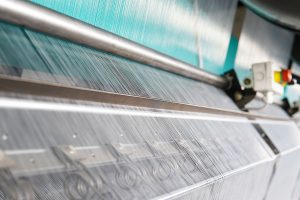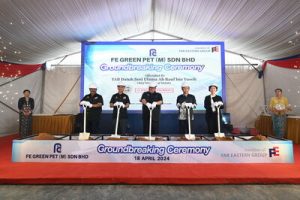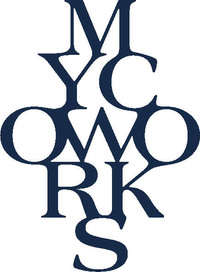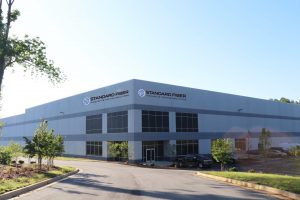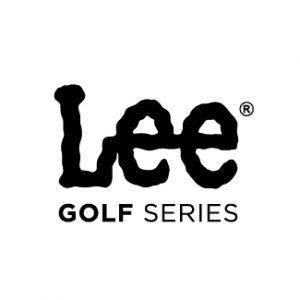 TEMPE, Ariz. — May 1, 2024 — Economic activity in the manufacturing sector contracted in April after one month of expansion following 16 consecutive months of contraction, say the nation’s supply executives in the latest Manufacturing ISM® Report On Business®.
TEMPE, Ariz. — May 1, 2024 — Economic activity in the manufacturing sector contracted in April after one month of expansion following 16 consecutive months of contraction, say the nation’s supply executives in the latest Manufacturing ISM® Report On Business®.
The report was issued today by Timothy R. Fiore, CPSM, C.P.M., Chair of the Institute for Supply Management® (ISM®) Manufacturing Business Survey Committee:
“The Manufacturing PMI® registered 49.2 percent in April, down 1.1 percentage points from the 50.3 percent recorded in March. The overall economy continued in expansion for the 48th month after one month of contraction in April 2020. (A Manufacturing PMI® above 42.5 percent, over a period of time, generally indicates an expansion of the overall economy.) The New Orders Index moved back into contraction territory after one month of expansion, registering 49.1 percent, 2.3 percentage points lower than the 51.4 percent recorded in March. The April reading of the Production Index (51.3 percent) is 3.3 percentage points lower than March’s figure of 54.6 percent. The Prices Index registered 60.9 percent, up 5.1 percentage points compared to the reading of 55.8 percent in March. The Backlog of Orders Index registered 45.4 percent, down 0.9 percentage point compared to the 46.3 percent recorded in March. The Employment Index registered 48.6 percent, up 1.2 percentage points from March’s figure of 47.4 percent.
“The Supplier Deliveries Index figure of 48.9 percent is 1 percentage point lower than the 49.9 percent recorded in March. (Supplier Deliveries is the only ISM Report On Business index that is inversed; a reading of above 50 percent indicates slower deliveries, which is typical as the economy improves and customer demand increases.) The Inventories Index registered 48.2 percent, the same reading as in March.
“The New Export Orders Index reading of 48.7 percent is 2.9 percentage points lower than the 51.6 percent registered in March. The Imports Index continued in expansion territory, registering 51.9 percent, 1.1 percentage points lower than the 53 percent reported in March and February. In the last three months, the Imports Index has been at its highest levels since July 2022 (54.4 percent).”
Fiore continued: “The U.S. manufacturing sector dropped back into contraction after growing in March, the first time since September 2022 that the sector reported expansion. Although demand improvement slowed, output remains positive and inputs stayed accommodative. Demand softening was reflected by the (1) New Orders Index dropping back into contraction, offset by fewer comments regarding ‘softening,’ (2) New Export Orders Index indicating contraction after two months of expansion, offset by panelists’ more optimistic comments, (3) Backlog of Orders Index remaining in moderate contraction territory, dropping back slightly compared to March, and (4) Customers’ Inventories Index at the ‘just right’ level, neutral for future production. Output (measured by the Production and Employment indexes) moderated compared to March, with a combined 2.1-percentage point downward impact on the Manufacturing PMI calculation. Panelists’ companies slightly increased their production levels month over month, and head-count reductions continued (but showed signs of easing) in April. Inputs — defined as supplier deliveries, inventories, prices and imports — continued to accommodate future demand growth. The Supplier Deliveries Index dropped marginally, continuing in ‘faster’ territory, and the Inventories Index was flat (the same reading as in March) and in slight contraction territory. The Prices Index moved further upward into strong expansion (or ‘increasing’) territory, as commodity driven costs continue to climb. Imports continued to grow, at a slower rate in April.
“Demand remains at the early stages of recovery, with continuing signs of improving conditions. Production execution continued to expand in March, but at a slower rate of growth than in prior months. Suppliers continue to have capacity but work to improve lead times, due to their raw material supply chain disruptions. Thirty-four percent of manufacturing gross domestic product (GDP) contracted in April, up from 30 percent in March. More importantly, the share of sector GDP registering a composite PMI calculation at or below 45 percent — a good barometer of overall manufacturing weakness — was 4 percent in April, higher than the 1-percent figure in March, but an indication of better health than the 27 percent recorded in January. Among the top six industries by contribution to manufacturing GDP in April, none had a PMI at or below 45 percent,” says Fiore.
The nine manufacturing industries reporting growth in April — in order — are: Nonmetallic Mineral Products; Printing & Related Support Activities; Primary Metals; Textile Mills; Electrical Equipment, Appliances & Components; Petroleum & Coal Products; Transportation Equipment; Chemical Products; and Plastics & Rubber Products. The seven industries reporting contraction in April — in the following order — are: Miscellaneous Manufacturing; Machinery; Furniture & Related Products; Wood Products; Food, Beverage & Tobacco Products; Fabricated Metal Products; and Paper Products.
What Respondents Are Saying
“Conditions are improving as demand is starting to recover. Costs continue to be a major concern as suppliers that rapidly increased prices in the follow-up from COVID-19 are slow to return to pre-pandemic levels.” [Chemical Products]
“Sales continue to exceed expectations in 2024. The forecasted dip in commercial vehicle production volumes appears to be avoided. Operational output is still strong, and the supply chain has the capacity to support. International supply chain risks have been minimized, but the frequency of supplier insolvencies or bankruptcies appears to be increasing.” [Transportation Equipment]
“Order flow has stabilized. It took some customers longer to replenish their supply chain network after the fourth-quarter rush we commonly have. Order rates are expected to remain stable through August.” [Food, Beverage & Tobacco Products]
“Some small indications of market improvement in China for our instruments and technology. Recovery is still slower than we had hoped, and macroeconomic uncertainty remains in Europe and the Middle East, as well as domestically in the U.S. with ongoing inflationary pressures and anticipation for the (upcoming) election.” [Computer & Electronic Products]
“Market conditions have definitely softened. Thankfully, our backlog is strong and will get us through the year. When conditions improve as expected later this year, we will be in a good position to continue building the business. We are a manufacturer of automated packaging equipment for the food and beverage industry, and with a continued shortage of workers, our customers are requiring more and more automation.” [Machinery]
“Business is slowing down — it has been a gradual decline for the last several months. We are not seeing new orders at last year’s level, or at this year’s budgeted levels.” [Fabricated Metal Products]
“There has been a lot of volatility in sales. On average, our sales look flat, but the volatility is concerning.” [Electrical Equipment, Appliances & Components]
“Business remained strong through the first quarter and has started strong for the second quarter. Commercial construction is still going well but on a regional basis, with the Southeast the strongest.” [Nonmetallic Mineral Products]
“The major factor affecting our business is the uncertainty of the Federal Reserve’s handling of interest rates, which will affect our customers’ businesses, thereby affecting ours.” [Plastics & Rubber Products]
“Business is stable, and orders have been consistent. We’re quoting new business for the factory, and automotive builds continue at averages but not near maximum outputs. Workforce is stable, with the turnover ratio dropping considerably. Salaries and hourly rates increasing to meet inflationary pressures.” [Primary Metals]
MANUFACTURING AT A GLANCE
April 2024 |
| Index |
Series
Index
Apr |
Series
Index
Mar |
Percentage
Point
Change |
Direction |
Rate of
Change |
Trend*
(Months) |
| Manufacturing PMI® |
49.2 |
50.3 |
-1.1 |
Contracting |
From Growing |
1 |
| New Orders |
49.1 |
51.4 |
-2.3 |
Contracting |
From Growing |
1 |
| Production |
51.3 |
54.6 |
-3.3 |
Growing |
Slower |
2 |
| Employment |
48.6 |
47.4 |
+1.2 |
Contracting |
Slower |
7 |
| Supplier Deliveries |
48.9 |
49.9 |
-1.0 |
Faster |
Faster |
2 |
| Inventories |
48.2 |
48.2 |
0.0 |
Contracting |
Same |
15 |
| Customers’ Inventories |
47.8 |
44.0 |
+3.8 |
Too Low |
Slower |
5 |
| Prices |
60.9 |
55.8 |
+5.1 |
Increasing |
Faster |
4 |
| Backlog of Orders |
45.4 |
46.3 |
-0.9 |
Contracting |
Faster |
19 |
| New Export Orders |
48.7 |
51.6 |
-2.9 |
Contracting |
From Growing |
1 |
| Imports |
51.9 |
53.0 |
-1.1 |
Growing |
Slower |
4 |
| OVERALL ECONOMY |
Growing |
Slower |
48 |
| Manufacturing Sector |
Contracting |
From Growing |
1 |
Manufacturing ISM® Report On Business® data is seasonally adjusted for the New Orders, Production, Employment and Inventories indexes.
*Number of months moving in current direction.
Commodities Reported Up/Down In Price And In Short Supply
Commodities Up in Price
Aluminum (5); Copper; Corrugated Boxes (2); Corrugated Sheets (2); Crude Oil (2); Diesel; Gasoline (2); High-Density Polyethylene (HDPE) Resin; Plastic Resins (4); Polypropylene (7); Precious Metals; Solvents; Steel (10); Steel — Carbon*; Steel — Hot Rolled; Steel Products; Titanium Dioxide; and Zinc.
Commodities Down in Price
Steel — Carbon*.
Commodities in Short Supply
Electrical Components (43); Electrical Equipment (3); Electronic Components; and Labor — Temporary.
Note: The number of consecutive months the commodity is listed is indicated after each item.
*Indicates both up and down in price.
April Maufacturing Index Summaries
Manufacturing PMI®
The U.S. manufacturing sector contracted in April, as the Manufacturing PMI® registered 49.2 percent, down 1.1 percentage points compared to March’s reading of 50.3 percent. “After breaking a 16-month streak of contraction with an expansion in March, the manufacturing sector dropped back into contraction. Only one out of five subindexes that directly factor into the Manufacturing PMI is in expansion territory, down from two in March. The New Orders Index moved back into contraction after one month of expansion. Of the six biggest manufacturing industries, two (Transportation Equipment; and Chemical Products) registered growth in April,” says Fiore. A reading above 50 percent indicates that the manufacturing sector is generally expanding; below 50 percent indicates that it is generally contracting.
A Manufacturing PMI® above 42.5 percent, over a period of time, generally indicates an expansion of the overall economy. Therefore, the April Manufacturing PMI® indicates the overall economy grew for the 48th straight month after one month of contraction (April 2020). “The past relationship between the Manufacturing PMI® and the overall economy indicates that the April reading (49.2 percent) corresponds to a change of plus-1.9 percent in real gross domestic product (GDP) on an annualized basis,” says Fiore.
The Last 12 Months
| Month |
Manufacturing
PMI® |
Month |
Manufacturing
PMI® |
| Apr 2024 |
49.2 |
Oct 2023 |
46.9 |
| Mar 2024 |
50.3 |
Sep 2023 |
48.6 |
| Feb 2024 |
47.8 |
Aug 2023 |
47.6 |
| Jan 2024 |
49.1 |
Jul 2023 |
46.5 |
| Dec 2023 |
47.1 |
Jun 2023 |
46.4 |
| Nov 2023 |
46.6 |
May 2023 |
46.6 |
| Average for 12 months – 47.7
High – 50.3
Low – 46.4 |
New Orders
ISM’s New Orders Index moved back into contraction in April, registering 49.1 percent, a decrease of 2.3 percentage points compared to March’s reading of 51.4 percent. The New Orders Index hasn’t indicated consistent growth since a 24-month streak of expansion ended in May 2022. “Of the six largest manufacturing sectors, three (Computer & Electronic Products; Chemical Products; and Fabricated Metal Products) reported increased new orders. Panelists indicated continuing improvement in demand, with comments of ‘softening’ new orders at their lowest level since the special reporting of such sentiment began in May 2022,” says Fiore. A New Orders Index above 52.3 percent, over time, is generally consistent with an increase in the Census Bureau’s series on manufacturing orders (in constant 2000 dollars).
The eight manufacturing industries that reported growth in new orders in April — in the following order — are: Printing & Related Support Activities; Nonmetallic Mineral Products; Plastics & Rubber Products; Paper Products; Primary Metals; Computer & Electronic Products; Chemical Products; and Fabricated Metal Products. The five industries reporting a decline in new orders in April are: Textile Mills; Food, Beverage & Tobacco Products; Machinery; Electrical Equipment, Appliances & Components; and Miscellaneous Manufacturing.
| New Orders |
%Higher |
%Same |
%Lower |
Net |
Index |
| Apr 2024 |
19.9 |
63.2 |
16.9 |
+3.0 |
49.1 |
| Mar 2024 |
26.1 |
57.7 |
16.2 |
+9.9 |
51.4 |
| Feb 2024 |
24.4 |
58.2 |
17.4 |
+7.0 |
49.2 |
| Jan 2024 |
20.2 |
56.3 |
23.5 |
-3.3 |
52.5 |
Production
The Production Index pulled back but remained in expansion territory in April, registering 51.3 percent, 3.3 percentage points lower than the March reading of 54.6 percent. The Production Index had been in contraction for 11 of the previous 16 months. Of the six largest manufacturing sectors, four (Transportation Equipment; Chemical Products; Computer & Electronic Products; and Fabricated Metal Products) reported increased production. “Panelists’ companies marginally improved output levels compared to March,” says Fiore. An index above 52.2 percent, over time, is generally consistent with an increase in the Federal Reserve Board’s Industrial Production figures.
The eight industries reporting growth in production during the month of April, in order, are: Plastics & Rubber Products; Petroleum & Coal Products; Nonmetallic Mineral Products; Transportation Equipment; Chemical Products; Computer & Electronic Products; Electrical Equipment, Appliances & Components; and Fabricated Metal Products. The three industries reporting a decrease in production in April are: Wood Products; Food, Beverage & Tobacco Products; and Machinery. Seven industries reported no change in production in April.
| Production |
%Higher |
%Same |
%Lower |
Net |
Index |
| Apr 2024 |
22.1 |
62.6 |
15.3 |
+6.8 |
51.3 |
| Mar 2024 |
25.3 |
61.7 |
13.0 |
+12.3 |
54.6 |
| Feb 2024 |
18.0 |
64.8 |
17.2 |
+0.8 |
48.4 |
| Jan 2024 |
18.4 |
57.8 |
23.8 |
-5.4 |
50.4 |
Employment
ISM’s Employment Index registered 48.6 percent in April, 1.2 percentage points higher than the March reading of 47.4 percent. “The index indicated employment contracted for the seventh month in a row (but at a slower rate in April) after one month of expansion and three months of contraction before that. Of the six big manufacturing sectors, two (Transportation Equipment; and Computer & Electronic Products) expanded employment in April. Many Business Survey Committee respondents’ companies are continuing to reduce head counts through layoffs (which accounted for 50 percent of reduction activity, down from 76 percent in March), attrition and hiring freezes. Panelists’ comments in April indicated a slowing of staff-cutting efforts. The approximately 1.7-to-1 ratio of hire versus reduction comments is the highest since September 2023, when it was 2-to-1,” says Fiore. An Employment Index above 50.3 percent, over time, is generally consistent with an increase in the Bureau of Labor Statistics (BLS) data on manufacturing employment.
Of 18 manufacturing industries, the four industries reporting employment growth in April are: Textile Mills; Nonmetallic Mineral Products; Transportation Equipment; and Computer & Electronic Products. The seven industries reporting a decrease in employment in April, in the following order, are: Paper Products; Miscellaneous Manufacturing; Furniture & Related Products; Plastics & Rubber Products; Fabricated Metal Products; Machinery; and Chemical Products. Seven industries reported no change in employment in April as compared to March.
| Employment |
%Higher |
%Same |
%Lower |
Net |
Index |
| Apr 2024 |
16.3 |
67.9 |
15.8 |
+0.5 |
48.6 |
| Mar 2024 |
14.1 |
67.8 |
18.1 |
-4.0 |
47.4 |
| Feb 2024 |
10.9 |
70.5 |
18.6 |
-7.7 |
45.9 |
| Jan 2024 |
11.0 |
70.6 |
18.4 |
-7.4 |
47.1 |
Supplier Deliveries†
Delivery performance of suppliers to manufacturing organizations was marginally faster in April for the second consecutive month after one month of slowing preceded by 16 straight months in “faster” territory. The Supplier Deliveries Index, which registered 48.9 percent, was 1 percentage point lower than the 49.9 percent reported in March. After a reading of 52.4 percent in September 2022, the index went into contraction territory in October and remained there until February. Of the six big industries, only one (Food, Beverage & Tobacco Products) reported slower supplier deliveries in April. “Suppliers continue to support their customers adequately as suppliers deliver faster, make more reliable promises and slowly reduce lead times,” says Fiore. A reading below 50 percent indicates faster deliveries, while a reading above 50 percent indicates slower deliveries.
The four manufacturing industries reporting slower supplier deliveries in April are: Nonmetallic Mineral Products; Primary Metals; Food, Beverage & Tobacco Products; and Electrical Equipment, Appliances & Components. The eight industries reporting faster supplier deliveries in April — in the following order — are: Wood Products; Miscellaneous Manufacturing; Plastics & Rubber Products; Fabricated Metal Products; Computer & Electronic Products; Machinery; Transportation Equipment; and Chemical Products. Six industries reported no change in delivery performance in April compared to March.
| Supplier Deliveries |
%Slower |
%Same |
%Faster |
Net |
Index |
| Apr 2024 |
8.1 |
81.6 |
10.3 |
-2.2 |
48.9 |
| Mar 2024 |
9.0 |
81.7 |
9.3 |
-0.3 |
49.9 |
| Feb 2024 |
8.9 |
82.4 |
8.7 |
+0.2 |
50.1 |
| Jan 2024 |
9.7 |
78.7 |
11.6 |
-1.9 |
49.1 |
Inventories
The Inventories Index registered 48.2 percent in April, the same reading as reported in March. “Manufacturing inventories contracted at the same rate compared to the previous month. Of the six big industries, only one (Food, Beverage & Tobacco Products) increased manufacturing inventories in April. Panelists’ companies continue to indicate a willingness to invest in manufacturing inventory to improve on-time deliveries, gain precision in revenue projections and improve customer service. However, they are proceeding judiciously on this objective, preferring to wait for additional demand,” says Fiore. An Inventories Index greater than 44.4 percent, over time, is generally consistent with expansion in the Bureau of Economic Analysis (BEA) figures on overall manufacturing inventories (in chained 2000 dollars).
Of 18 manufacturing industries, four reported higher inventories in April: Wood Products; Electrical Equipment, Appliances & Components; Nonmetallic Mineral Products; and Food, Beverage & Tobacco Products. The eight industries reporting lower inventories in April — in the following order — are: Miscellaneous Manufacturing; Computer & Electronic Products; Furniture & Related Products; Plastics & Rubber Products; Fabricated Metal Products; Chemical Products; Machinery; and Transportation Equipment. Six industries reported no change in raw materials inventories in April compared to March.
| Inventories |
%Higher |
%Same |
%Lower |
Net |
Index |
| Apr 2024 |
13.1 |
67.7 |
19.2 |
-6.1 |
48.2 |
| Mar 2024 |
16.0 |
66.2 |
17.8 |
-1.8 |
48.2 |
| Feb 2024 |
12.7 |
70.4 |
16.9 |
-4.2 |
45.3 |
| Jan 2024 |
14.0 |
63.8 |
22.2 |
-8.2 |
46.2 |
Customers’ Inventories†
ISM’s Customers’ Inventories Index registered 47.8 percent in April, up 3.8 percentage points compared to the 44 percent reported in March. “Customers’ inventory levels decreased at a slower rate in April, with the index moving upward in ‘too low’ territory. Panelists report their companies’ customers have sufficient amounts of their products in inventory, which is considered neutral for future new orders and production,” says Fiore.
The five industries reporting customers’ inventories as too high in April are: Textile Mills; Wood Products; Food, Beverage & Tobacco Products; Miscellaneous Manufacturing; and Plastics & Rubber Products. The seven industries reporting customers’ inventories as too low in April, in order, are: Primary Metals; Paper Products; Fabricated Metal Products; Machinery; Chemical Products; Transportation Equipment; and Computer & Electronic Products.
Customers’
Inventories |
%
Reporting |
%
Too High |
%
About Right |
%
Too Low |
Net |
Index |
| Apr 2024 |
76 |
15.6 |
64.3 |
20.1 |
-4.5 |
47.8 |
| Mar 2024 |
75 |
8.9 |
70.2 |
20.9 |
-12.0 |
44.0 |
| Feb 2024 |
77 |
10.9 |
69.7 |
19.4 |
-8.5 |
45.8 |
| Jan 2024 |
75 |
10.2 |
66.9 |
22.9 |
-12.7 |
43.7 |
Prices†
The ISM Prices Index registered 60.9 percent, 5.1 percentage points higher compared to the March reading of 55.8 percent, indicating raw materials prices increased in April for the fourth month in a row after eight consecutive months of decreases. Of the six largest manufacturing industries, four — Chemical Products; Fabricated Metal Products; Computer & Electronic Products; and Machinery — reported price increases in April. “The Prices Index indicated strong expansion in April, with its highest reading since June 2022 (78.7 percent). Commodity prices continue to increase, especially crude oil, aluminum, steel and plastics. Thirty-one percent of companies reported higher prices in April, compared to 24 percent in March,” says Fiore. A Prices Index above 52.8 percent, over time, is generally consistent with an increase in the Bureau of Labor Statistics (BLS) Producer Price Index for Intermediate Materials.
In April, the 13 industries that reported paying increased prices for raw materials, in order, are: Printing & Related Support Activities; Textile Mills; Petroleum & Coal Products; Plastics & Rubber Products; Chemical Products; Nonmetallic Mineral Products; Paper Products; Electrical Equipment, Appliances & Components; Fabricated Metal Products; Primary Metals; Computer & Electronic Products; Furniture & Related Products; and Machinery. The only industry reporting paying decreased prices for raw materials in April is Food, Beverage & Tobacco Products.
|
Prices |
%Higher |
%Same |
%Lower |
Net |
Index |
| Apr 2024 |
30.8 |
60.1 |
9.1 |
+21.7 |
60.9 |
| Mar 2024 |
23.6 |
64.4 |
12.0 |
+11.6 |
55.8 |
| Feb 2024 |
18.3 |
68.3 |
13.4 |
+4.9 |
52.5 |
| Jan 2024 |
19.5 |
66.7 |
13.8 |
+5.7 |
52.9 |
Backlog of Orders†
ISM’s Backlog of Orders Index registered 45.4 percent, down 0.9 percentage point from the 46.3 percent reported in March, indicating order backlogs contracted for the 19th consecutive month after a 27-month period of expansion. None of the six largest manufacturing industries reported expanded order backlogs in April. “The index remained in contraction in April, as new order rates and production output were insufficient to allow backlogs to grow,” says Fiore.
Of 18 manufacturing industries, the three that reported growth in order backlogs in April are: Wood Products; Nonmetallic Mineral Products; and Plastics & Rubber Products. The 11 industries reporting lower backlogs in April — in the following order — are: Textile Mills; Furniture & Related Products; Primary Metals; Paper Products; Transportation Equipment; Miscellaneous Manufacturing; Machinery; Computer & Electronic Products; Food, Beverage & Tobacco Products; Electrical Equipment, Appliances & Components; and Chemical Products.
Backlog of
Orders |
%
Reporting |
%Higher |
%Same |
%Lower |
Net |
Index |
| Apr 2024 |
90 |
12.2 |
66.4 |
21.4 |
-9.2 |
45.4 |
| Mar 2024 |
92 |
14.8 |
62.9 |
22.3 |
-7.5 |
46.3 |
| Feb 2024 |
93 |
14.9 |
62.8 |
22.3 |
-7.4 |
46.3 |
| Jan 2024 |
91 |
17.5 |
54.4 |
28.1 |
-10.6 |
44.7 |
New Export Orders†
ISM’s New Export Orders Index registered 48.7 percent in April, down 2.9 percentage points from March’s reading of 51.6 percent. “The New Export Orders Index reading indicates that export orders contracted in April following two straight months of expansion and eight months of contraction prior to that. Panelists’ comments continue to support improvement in demand from overseas customers,” says Fiore.
The five industries reporting growth in new export orders in April are: Wood Products; Plastics & Rubber Products; Miscellaneous Manufacturing; Food, Beverage & Tobacco Products; and Electrical Equipment, Appliances & Components. The six industries reporting a decrease in new export orders in April — in the following order — are: Furniture & Related Products; Primary Metals; Computer & Electronic Products; Transportation Equipment; Machinery; and Chemical Products. Six industries reported no change in exports in April.
New Export
Orders |
%
Reporting |
%Higher |
%Same |
%Lower |
Net |
Index |
| Apr 2024 |
74 |
9.7 |
78.0 |
12.3 |
-2.6 |
48.7 |
| Mar 2024 |
76 |
12.2 |
78.8 |
9.0 |
+3.2 |
51.6 |
| Feb 2024 |
71 |
12.0 |
79.2 |
8.8 |
+3.2 |
51.6 |
| Jan 2024 |
73 |
8.4 |
73.5 |
18.1 |
-9.7 |
45.2 |
Imports†
ISM’s Imports Index registered 51.9 percent in April, cooling somewhat with a decrease of 1.1 percentage points compared to March’s reading of 53 percent. “Imports grew for the fourth consecutive month in April after contracting for 14 consecutive months. Companies continue to increase on-hand inventories, in line with an overall restocking of input materials. Ocean freight costs continue to rise as a result of the Red Sea turmoil and Suez Canal disruptions,” says Fiore.
The six industries reporting an increase in import volumes in April — listed in the following order — are: Wood Products; Paper Products; Fabricated Metal Products; Food, Beverage & Tobacco Products; Transportation Equipment; and Chemical Products. The five industries that reported lower volumes of imports in April are: Primary Metals; Furniture & Related Products; Plastics & Rubber Products; Computer & Electronic Products; and Machinery. Seven industries reported no change in imports in April compared to March.
| Imports |
%
Reporting |
%Higher |
%Same |
%Lower |
Net |
Index |
| Apr 2024 |
85 |
11.6 |
80.6 |
7.8 |
+3.8 |
51.9 |
| Mar 2024 |
84 |
12.5 |
80.9 |
6.6 |
+5.9 |
53.0 |
| Feb 2024 |
83 |
14.0 |
77.9 |
8.1 |
+5.9 |
53.0 |
| Jan 2024 |
83 |
11.9 |
76.3 |
11.8 |
+0.1 |
50.1 |
†The Supplier Deliveries, Customers’ Inventories, Prices, Backlog of Orders, New Export Orders, and Imports indexes do not meet the accepted criteria for seasonal adjustments.
Buying Policy
The average commitment lead time for Capital Expenditures in April was 170 days, a decrease of six days compared to March. Average lead time in April for Production Materials was 79 days, an increase of one day. Average lead time for Maintenance, Repair and Operating (MRO) Supplies was 44 days, the same as in March.
| Percent Reporting |
Capital
Expenditures |
Hand-to-
Mouth |
30 Days |
60 Days |
90 Days |
6 Months |
1 Year+ |
Average
Days |
| Apr 2024 |
17 |
4 |
8 |
13 |
32 |
26 |
170 |
| Mar 2024 |
14 |
5 |
9 |
13 |
31 |
28 |
176 |
| Feb 2024 |
14 |
5 |
7 |
14 |
32 |
28 |
177 |
| Jan 2024 |
16 |
5 |
9 |
13 |
29 |
28 |
172 |
| Percent Reporting |
|
Production
Materials |
Hand-to-
Mouth |
30 Days |
60 Days |
90 Days |
6 Months |
1 Year+ |
Average
Days |
|
| Apr 2024 |
7 |
23 |
29 |
30 |
7 |
4 |
79 |
|
| Mar 2024 |
8 |
22 |
31 |
28 |
7 |
4 |
78 |
|
| Feb 2024 |
9 |
25 |
26 |
25 |
11 |
4 |
80 |
|
| Jan 2024 |
8 |
23 |
30 |
24 |
10 |
5 |
83 |
|
| Percent Reporting |
MRO
Supplies |
Hand-to-
Mouth |
30 Days |
60 Days |
90 Days |
6 Months |
1 Year+ |
Average
Days |
| Apr 2024 |
29 |
37 |
17 |
12 |
4 |
1 |
44 |
| Mar 2024 |
25 |
40 |
18 |
12 |
5 |
0 |
44 |
| Feb 2024 |
29 |
36 |
19 |
11 |
5 |
0 |
43 |
| Jan 2024 |
29 |
37 |
16 |
13 |
5 |
0 |
43 |
Posted: May 3, 2024
Source: Institute for Supply Management
 HUNTINGTON BEACH, Calif. — May 7, 2024 — Leslie Jee Textiles, a Southern California-based residential and contract upholstery textile design and distribution company, is delighted to announce its partnership with TSG Finishing for warehouse and distribution services from its Hickory, N.C., facility. This strategic collaboration marks a significant milestone in the company’s growth trajectory, poised to enhance delivery efficiency and service, thus furthering Leslie Jee Textiles’ dedication to optimizing its supply chain performance for the benefit of its valued customers.
HUNTINGTON BEACH, Calif. — May 7, 2024 — Leslie Jee Textiles, a Southern California-based residential and contract upholstery textile design and distribution company, is delighted to announce its partnership with TSG Finishing for warehouse and distribution services from its Hickory, N.C., facility. This strategic collaboration marks a significant milestone in the company’s growth trajectory, poised to enhance delivery efficiency and service, thus furthering Leslie Jee Textiles’ dedication to optimizing its supply chain performance for the benefit of its valued customers. With a rich 123-year history, TSG Finishing is celebrated for its commitment to technical excellence, constant innovation, and catering to the evolving needs of the textile industry. Its distribution center houses the largest installation of fabric storage tubes in North America with a 50,000-roll capacity as well as 30,000 square feet of open floor space for specialty product storage. Three additional processing facilities house its superior upholstery and industrial coating services, an acclaimed hallmark of TSG’s capabilities.
With a rich 123-year history, TSG Finishing is celebrated for its commitment to technical excellence, constant innovation, and catering to the evolving needs of the textile industry. Its distribution center houses the largest installation of fabric storage tubes in North America with a 50,000-roll capacity as well as 30,000 square feet of open floor space for specialty product storage. Three additional processing facilities house its superior upholstery and industrial coating services, an acclaimed hallmark of TSG’s capabilities.


